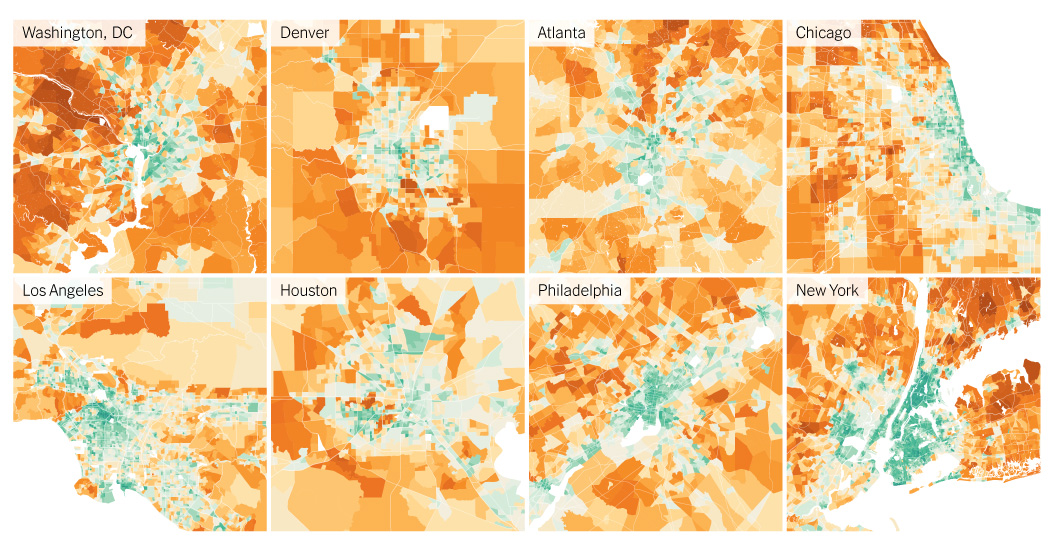Urbanism, Neighborhoods, and Cars: Why Urban Planning is Needed in the Last Three Decades of the Industrial Era
Americans have built more homes in the suburbs than in the city since the end of World War II. Lots of factors were at play, including heavy government investment in new roads and highways, white flight away from cities as well as consumer demand for bigger houses. The result is that it is often easier to buy a home in a suburb or exurb than it is in a city.
The new research offers some guidance for how local governments could pursue more climate-friendly housing policy, said Chris Jones, director of the CoolClimate Network at UC Berkeley, which developed the methodology behind the data set. For one, not every city needs massive new skyscrapers. Even small town centers in suburbs might be good places to house more people.
For many years, local governments have required the construction of parking lots as part of any development. These measures, along with expansive highways that cut through largely minority neighborhoods and endless suburban sprawl, have cemented cars as the default transportation option for most Americans.
In the past few months a number of cities across the country have loosened or abolished requirements for developers to build new parking lots. Gernot Wagner, a climate economist at the Columbia Business School, claims political leaders have made downtowns look like bombs are hitting them because of parking minimums.
Climate campaigners and public transportation advocates have seized upon the previously esoteric issue of parking minimums, posting aerial pictures on social media demonstrating the vast swathes of prime urban land given over to parking lots and pushing city councils to foster denser communities with more opportunities to walk, cycle, or catch buses and trains rather than simply drive.
Cities such as Buffalo, New York; and Fayetteville, Arkansas, scaled back parking minimums a few years ago and have reported a surge in activity to transform previously derelict buildings into shops, apartments, and restaurants. Developers previously saw such work as unviable due to the requirement to build plots for car parking, in many cases several times larger than the building itself.
Nashville is one of a few cities that are hoping to do the same. “It’s about the climate, it’s about walkability, it’s reducing traffic and the need for everyone to have a car,” said Angie Henderson, a member of the Nashville Metropolitan Council, who proposed the parking change for the city’s core area.
Henderson said she was struck by how a dental practice in her district was forced to construct a parking lot for 45 cars, requiring the clearing of trees from a nearby hillside, despite only having space for a handful of patients.
